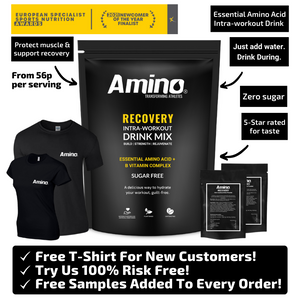Why is it important?It can be frustrating to put in loads of effort and not get the muscle gains you really want.
|
In this article and video, we look at a strategy you can use to make sure you’re on track to build muscle mass. It’s not easy to know where to start, but we think this video may help.
A common complaint from young athletes is that they struggle to put on lean muscle mass; their fat stores grow instead. If you’ve tried everything from varying your rep counts to trying different exercises and sampling supplements, how can you be sure you’re actually on the path to building muscle?
What are the Signs of Muscle Growth?
If you’re following a strategic diet and fitness routine but you’re not sure whether your gains are the result of muscle growth, there are a few signs to look for. A combination of the following is typically a good indicator of muscle growth:
- Weight gain
- Increased strength and performance
- Noticeable changes to the size of target muscle groups
- Your clothes fit differently
To be entirely sure that you’re seeing objective results, however, you need to take away the guesswork and add some numbers.
How to Measure Muscle Growth?
“Muscle weight gain” can be measured by tracking your lean body mass (LBM) over time.
Lean body mass is everything in your body excluding fat. It includes your bones, organs, muscle and water.
To calculate LBM, you need to know your body fat percentage measurement - more how to do this below. For example, if you weigh 135 lb and have 25% body fat, that means you have 27lb of fat and 108 lb of LBM. If you know this figure, you can track your LBM over time.
Even if you don’t know this figure, you can be fairly certain that your body composition is changing if your clothing starts to fit differently!
How do you ensure you’re building muscle?
Random attempts won’t cut it when it comes down to sustainable muscle growth. You have to use science as much as possible in your planning and take pragmatic steps to ensure you’re building muscle:
1. Calculate your lean body mass (LBM)
How much muscle do you have now?
There are a number of ways to measure your lean body mass. This can be as basic as weighing yourself, looping a tape measure around key body parts, or as advanced as using calipers and a dexa body scan. The key is to choose a unit of measurement and recording your findings. This gives you a starting point to measure any changes against.
There are pros and cons to both detailed and rough measures. As a rule of thumb, the more experienced you get, the more detailed you can get.
Once you have your unit of measurement, be sure to review it periodically. Here is a link to some options to consider: some ways to measure your LBM
2. Make sure you’re doing the right things to build muscle
Do you have enough information and tools for your training programme and diet?
The second step is to identify the right training programme to ensure the right amount of ‘tissue damage’, while making sure you eat the excess calories you need to build muscle (and not going overboard, which is easily done).
This starts with immersing yourself in knowledge about both topics. You could choose to do online research or enlist the services of a coach/mentor to guide you. They’ll advise on what you’ll need to do on a daily, weekly or monthly basis to achieve the results you want.
Nutrition-wise, it will become clear that you have to increase your calorie intake to achieve muscle growth. The energy we store in our bodies doesn’t magically appear: we have to consume it.
If you aim to build muscle, you need to increase your calorie intake above what you burn on a daily basis. Ideally, the largest proportion of those calories should come from protein. If you're not consuming more than you burn, you will struggle to get heavier. It's that simple. Here’s a muscle-building calculator to help you work out the calories you need to eat.
Related: 5 essential nutrition tips to build lean muscle
Training-wise, the concept of stimulating reps is vital, so check out content from Chris Beardsley. You’ll find most of the information on the best approaches here: Beardsley on 'Training to failure'
When it comes to mindset, sleep is king!
Related: Sleep! It may help you build muscle.
3. Retest and check you’re on course
Are you winning?
The final step is to re-measure yourself at consistent intervals, so you can check you’re on course. Expect to get it wrong for the first few attempts, maybe you need to change up the tools / mentors you followed previously . The key is to keep refining the previous steps until you start seeing results.
Science, education, resilience and determination are essential if you want to see success.
Until next time, keep crushing it 💪






